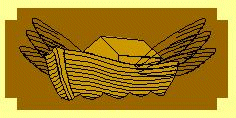
Photographs of Medieval Norwich
Click on an image to see the full picture

Settlement along the banks of the River Wensum began in the 8th and 9th centuries,
and recent excavations in Coslany, to the north of the River, have discovered some of the
earliest embankments of the river. The Norman invasion was traumatic for Norwich. Nearly
a quarter of the city was destroyed to make way for new buildings, most notably the huge
castle, with the great Norman keep.
During the 11th century Norwich was the second largest city in England, after London,
and one of the most important places in the kingdom. The inhabitants of Norwich were an
argumentative lot, and were not even cowed by the huge castle that the Normans plonked
down in their midst. The Normans therefore decided to bring in some nice reliable French
settlers who formed a new settlement, known as the French Borough, on the western side
of the Saxon town.
The Guildhall was built between 1407 and 1412 just after Henry IV granted Norwich a charter
that gave it the privilege of appointing a mayor, two sheriffs and aldermen to run its
affairs. Some of the houses in Elm Hill still date from this era.



